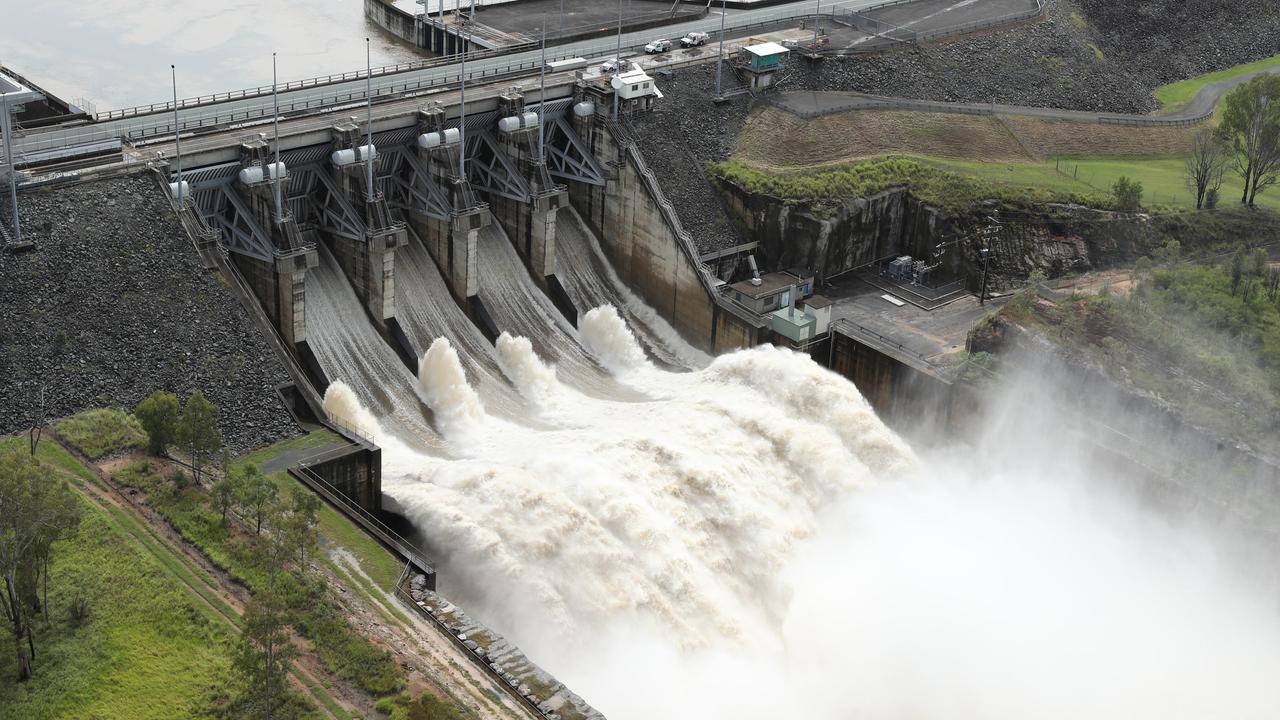Toowoomba council endorses Water Vision 2071 report with options for recycled water, new dam sources
Toowoomba’s current water supplies will be insufficient by 2050 — so what are the options? It’s all revealed in the council’s new report:
Council
Don't miss out on the headlines from Council. Followed categories will be added to My News.
Recycled water, new dams and expanded treatment plants are just some of the long-term options the Toowoomba Regional Council will consider to meet a serious shortfall of water over the next 50 years.
Councillors at Tuesday’s committee meeting endorsed the groundbreaking Water Vision 2071 document, which explores billions in new and upgraded infrastructure for the region across its bulk water and bore system.
The document, which took a “blue sky” approach by assessing all options regardless of likelihood, will be updated every four years to address the 29,000ML residents and industry will require every year from our catchment in just 48 years.

That figure, which is nearly double the current usage, is effectively 7600ML per year more than the council’s current entitlements from its three dams as well as Wivenhoe.
Water and waste chair councillor Rebecca Vonhoff said assumed ongoing projects (the planned base case), including increasing allocations to 33GL per year by 2027, upgrading the Mt Kynoch water treatment plant to 75ML per day by 2034 and connecting five southern communities to bulk water by 2027, would secure the region until 2040.
From there, the document identified three portfolios of infrastructure works that the council could focus on to secure the region until 2071.

They include the utilisation of existing supplies like further increases of Toowoomba’s allocation from Wivenhoe to 21GL per year, exploring alternative supplies like 15ML/day of recycled water into Cooby Dam by 2049 or connecting Toowoomba to a water source outside the region by 2046 such as Emu Creek, Lockyer Creek, Boondooma Dam or Clarence River.
Ms Vonhoff told The Chronicle the document was about “thinking ahead”.
“The document considers all options, all scenarios – some more likely than others – for water out to 2071,” she said.
“There are a lot of moving parts, including changed rainfall and groundwater recharging, technology, what infrastructure the state and federal governments fund, so we need to keep making changes and re-releasing versions of the document every four years.
“The need to implement options from any of the portfolios is not required until 2040 and beyond due to the capacity gained from the works included in the planned base case.”
For communities outside the bulk water network, the report recommended a new bore at Pittsworth and additional raw water connection between the Boondoomba Dam in the South Burnett to Crows Nest.
The council’s strategic water planning and capital delivery manager Jaek Prassier said progress on the Queensland government’s Toowoomba to Warwick (T2W) pipeline, which was announced after work had started on the document, could see the council build both a water and wastewater treatment plant in the growing southern corridor.

“Wetella (wastewater plant) does experience a capacity issue by 2050, and we’re working with our strategic planning team around a southern treatment plan,” he told councillors.
“(A new southern wastewater plant would be) located close to the potential new water treatment plant as a holistic strategic approach that sees a best utilisation of the resources we have and lowest overall cost to council.”
Councillors discuss recycled water
On the subject of recycled water, which has been a contentious issue in Toowoomba for 25 years, councillor Nancy Sommerfield said an opportunity existed once the recently-expanded New Acland coal mine was done with its 5.5GL annual wastewater allocation agreement it had with council.
“We don’t have a lot of leftover recycled water — it might look different by 2049 because Acland won’t be around then and using that water, so there is opportunity there but that means we’ve got to consult with the community,” she said.
Earlier, deputy mayor Geoff McDonald noted recycled water would be pumped into Wivenhoe when SEQwater’s levels dropped below 40 per cent, meaning diluted recycled supply could be pumped into Cressbrook before 2049.









